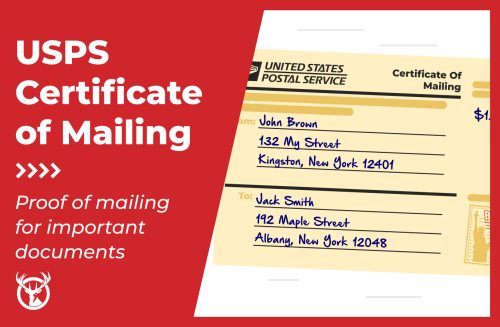As an eCommerce business, you’ve probably noticed an uptick in shipping and costs – both domestic and international — over the past few years. From the pandemic to rising inflation, shipping costs have gone up. And obviously these cost increases have had a dramatic impact upon your bottom line. The International Money Fund (IMF), studying data from 143 countries over the past 30 years, found that shipping costs are an important driver of inflation around the world. The study noted that when freight rates double, inflation picks up about 0.7%; the effects peak after a year and last up to 18 months. The good news is there are steps you can take to reduce your shipping costs by tackling the size and weight of your shipments.

First let’s look at how the size and weight of shipments impacts your cost.
The impact of size and weight on your shipments
As a result of dramatic increases in shipping rates and costs, eCommerce merchants are looking for ways to reduce shipping costs. Being over or under a particular weight can make a shipping cost difference of over $2 per package. That’s huge if you’re shipping thousands of boxes per month.

Goods that are larger, bulkier, or heavier require specialized trucks or air freight planes to safely transport them . Transportation costs for larger shipments tend to be higher, while smaller items that don’t require special handling tend to have lower fees. So, when you’re planning how you transport your goods, it’s important to consider the shipment’s dimensions, weight, and fragility. And in doing so, you can minimize the costs associated with shipping it.
Did I mention the importance of dimensions?
Your packaging dimensions are a major factor in calculating shipping rates. In fact, some carriers consider dimensional weight the main variable in their determination of shipping costs.
What is dimensional weight, or DIM weight? It’s how much space a package takes up on a truck or airplane during transport. Another way of looking at it is the weight for shipping purposes based on the dimensions of the box or container rather than the actual weight on a scale. For example, using a box that’s too large for a lightweight, non-breakable item may cost you more to ship. That’s why every eCommerce company needs to understand dimensional weight to keep their costs as low as possible.
Dimensional weight calculation
To calculate dimensional weight, you need to calculate the length, width, and height of a box. Use this equation:
(L x W x H)/DIM factor = dimensional weight. Note that each of the three main carriers — UPS, FedEx, and USPS — have their own DIM factor. For 2021, FedEx and UPS both have a DIM factor of 139. USPS uses a DIM factor of 166. The higher the DIM factor, the lower the dimensional weight.
When it comes to dimensional weight, size matters, so you should evaluate your current packaging and find ways to downsize. For example, can you ship your items in a smaller box? What about using envelopes? Whenever you can find opportunities to decrease your dimensional weight without compromising the safety and security of your packaging contents, you should do it.
So how do you reduce DIM weight and its accompanying costs?
- Try to reduce the dimensions of the package as much as possible. If the item is lightweight and not fragile, you don’t have to pack it in a large box. Using a smaller one can save you a significant amount. If the items you’re going to ship vary in size, multi-depth boxes can be a great way to accommodate items of assorted sizes.
- If you sell small, non-fragile products like clothing or other soft goods, try shipping your orders in plastic mailer envelopes or poly mailer bags. These can be more cost-effective than boxes. Not only do these shipping options eliminate the need to use a heavier box, but they also eliminate the need for void fill or other packaging. Void fill not only adds purchase, shipping, and storage costs, but also weight.
- Using poly mailers is cheap because they take up less space and reduce packaging costs. Not only will these affordable packaging options reduce the space that package takes up on a delivery truck, but they may also reduce the need for other packing supplies such as tape and bubble pack. That means you can save even more money.
The shape of packaging can reduce your shipping costs
Consolidating your packaging and finding the right carton for your product can help reduce shipping costs over the long run. Right sizing can lead to big packaging cost and weight reductions.

- Combine two or more products within a package. It’s usually more expensive to ship two separate packages than one package that weighs slightly more. Packaging items together can significantly cut down on shipping and packaging costs. By consolidating your shipment, you can cut weight, density, and the chances of damage or loss; it’s a lot easier to track one piece of freight than to keep track of many (especially if they’re small boxes).
- Use the best shipping container for your product. Try to use packaging that is as close to the item’s shape as possible. Telescoping boxes are a great option for longer, odd-sized items that vary in length, such as flat-screen TVs, golf clubs, and rolled rugs. You’d be surprised how many shippers use boxes that are too large because that size is a stock size for their supplier.
- If you sell products in bottles, you might want to consider square-edged bottles over round ones. Square-edged bottles, when placed side-by-side in a carton, take up less space than round bottles. This translates into smaller carton sizes for the same number of bottles in a case or on a pallet.
Reduce your shipment weight so it doesn’t weigh down your bottom line
One way to reduce your shipping costs is to reduce the weight of your shipments. Typically, your product has a fixed weight, but there are packaging options you can consider that can help minimize shipment weight and shipping costs. Always keep in mind that every ounce counts.
- Eliminate inner packaging. Many products are packaged and then inserted into another box for shipping. Eliminate the inner packaging, if possible, and just ship the product in one box to reduce the size and weight of the shipment.
- Use the correct box or packaging type. Sometimes a box isn’t the best option for shipping as they are heavy and bulky. Try lighter packaging such as a poly bag to reduce the weight of the package and potentially qualify for a less expensive mail class.
- Use lightweight boxes or packages. Boxes have different thicknesses and grades designed to hold specific weights. Using a lighter box may work for your products that do not require sturdy packaging.
- Use lightweight packaging materials — bubble wrap, crinkle paper, or filler paper are good options. Consider packing peanuts instead of wool blankets, which are heavier.
- Reduce packaging — selecting the right size box or packaging for your products reduces the extra weight from additional packaging materials and box materials.
As package weight adds up, so does the accompanying shipping cost. Explore alternative container possibilities.
- When shipping bulk products, consider poly drums as an alternative to steel drums.
- Determine if lighter-weight packaging is an option for your products. Plastic packaging typically weighs less than glass. Using the former as opposed to the latter can add up to substantial savings when you send bulk orders.
The materials you use to ship can make a material difference
Use lighter or smaller packaging materials to reduce shipping costs.
One highly effective way to ship products is using corrugated cartons. Not only are they lightweight, but they are a strong packaging option. They’re also relatively inexpensive, reusable, and protect more fragile items from breaking or scratching.
Here are other packing material options that can save help you save on supply costs:
- Double- and triple-wall corrugated materials can provide greater protection than standard single-wall cartons.
- For smaller items shipped within the same carton as a larger product, such as products that are in parts for assembly, you may want to substitute poly bags for boxes. Non-fragile items such as screws can be sorted into re-closable poly bags. Not only are these a great option for organizing smaller items in shipments, but they also add minimal weight to the overall package and tend to take up less dimensional space than boxes.
- Use lighter-weight cushioning materials and infill, such as bubble wrap and air pillows, kraft packing paper, box pads, and loose-fill peanuts to cushion your items. These packing products can reduce your packages’ overall weight.
Other things to consider that can help reduce shipping costs
- Reduce the size of your parcels, so you can ship them in the lowest shipping category possible. Boxes that are too big, or any packaging that is inappropriate for its contents, can result in higher costs.
- It’s important to note that if you sell goods that are atypical, try using flat-rate shipping as it doesn’t depend on the size or the weight of your parcel.
- Determine if your shipment is LTL (less-than-truckload) or parcel; if your shipment is small enough, you can save money using small parcel shipping instead of LTL.
- With an increasing number of freight classes being dependent on density, using a density calculator can help you avoid costly reclasses.
- Pallets are designed to optimize space and dimension use. Palletized cargo is cheaper to transport as the carrier can optimize the space on the truck because of the standard dimensions of the pallets.
- Always know how many square feet of truck space you’ll need; if you’re using standard pallets, know your count and if they’re stackable.
- Don’t assume flat rate is best — Priority Flat Rate packaging is a great way to save on heavy packages. And it’s convenient for the clerk at the post office to recommend it as cost-effective packaging. However, it’s frequently only advantageous to USPS.
- Regional Rate Boxes vs. Flat Rate Boxes — if you’re shipping a parcel that weighs over a pound, Flat Rate isn’t always the best option. Depending on where you’re shipping to, Regional Flat Rate Boxes offer an affordable alternative, particularly for nearer USPS zones.
Work with a logistics expert to keep costs contained
One of the best ways to reduce freight shipping costs is to hire a 3PL or a logistics transport expert. These specialists can handle your eCommerce business’ logistics operations, freight transportation, delivery, and storage. They’re experts at coordinating how to get products from point A to point B with maximum efficiency and cost-effectiveness.
By having a 3PL manage your logistics, you have someone else handle the planning, implementation, and control of shipping so you can concentrate on growing and scaling your eCommerce business.
By choosing to go this route, you can reduce overhead by cutting freight costs (because they have volume discounts). You can also obtain the best possible shipping prices. And especially if you’re shipping large and bulky products, which Red Stag Fulfillment specializes in, you can rest assured that your shipments are not only safe and secure but shipped in the most economical way possible.
The bottom line
Remember to reduce the size, weight, and dimensions of your packaging and its accompanying packing materials. That way you can cut down the total weight and DIM weight of your shipment. It will go a long way to helping you reduce your shipping costs and increase your profit margins.













